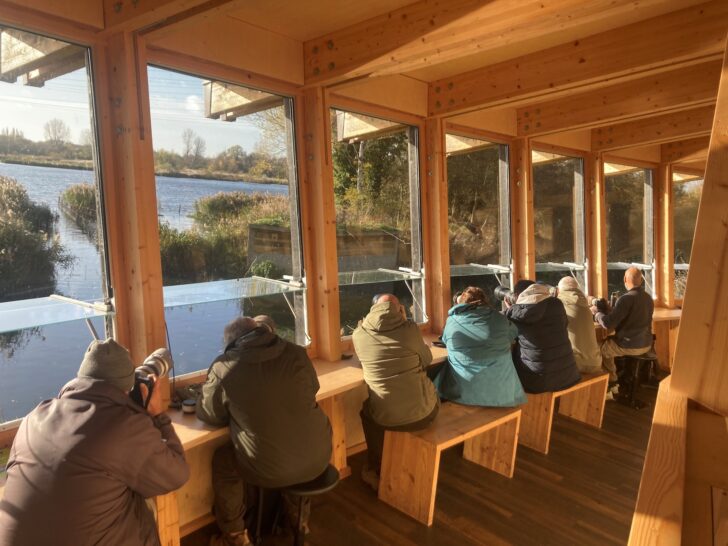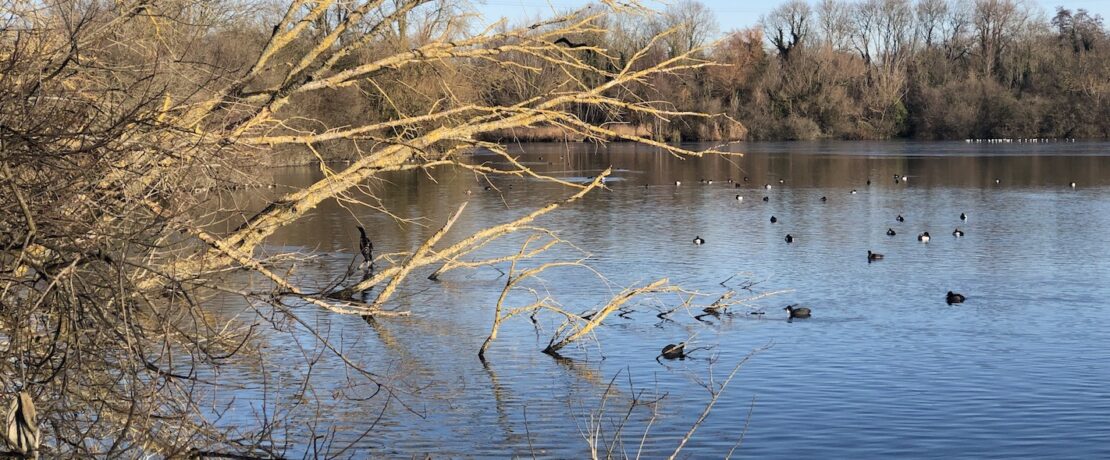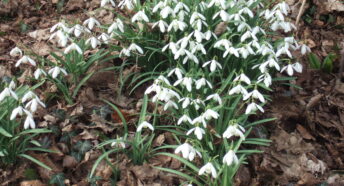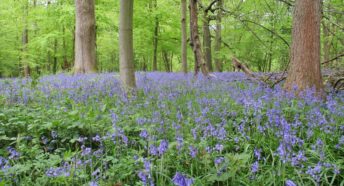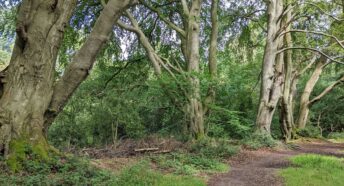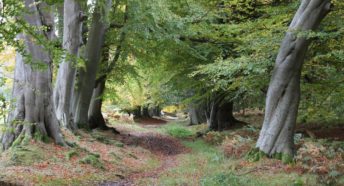The Lee Valley RAMSAR wetland site – a unique wildlife habitat
Across the world wetlands are precious, playing a key role in the fight against climate change and loss of biodiversity as well as making economic sense. They soak up floodwater and provide freshwater, store huge amounts carbon, provide food and jobs, and are home for at least 126,000 species.
But what are Ramsar wetlands sites?
Ramsar Sites – General Background
Wetlands are one of the world’s most biodiverse habitats with 40% of the worlds plants and animals being dependent on them. They provide homes for many endangered species and act as vital ‘service stations’ for millions of migratory birds to rest and refuel. However according to the International Union for Conservation of Nature, 27% of assessed wetland species are under threat from pollution, habitat loss and climate breakdown.
During the 1960’s, several nature conservation organisations and governments recognised that an international treaty was essential to protect wetlands. The ‘Wetlands Convention’ was adopted in Ramsar, Iran in February 1971. It provides the only international mechanism for protecting sites of international importance and is thus of key conservation significance.
Ramsar Sites in the UK
The majority of UK Ramsar Sites receive statutory protection through being Sites of Special Scientific Interest (SSSIs) and some are also designated as Special Protection Areas (SPAs). Whilst the initial emphasis was on selecting sites of importance to waterbirds, this has now evolved to also consider the broader ecological and geographic aspects.
In total there are 149 Ramsar sites in the UK covering more than 750,000 hectares with the Lee Valley being the only one in Hertfordshire.
Why wetlands are so important for people as well as animals
90% of the UK’s wetlands have been lost in the last 1,000 years, increasing the risk of flooding and flood damage to people’s homes, as well as significantly impacting wetland biodiversity. The UK Government’s The Economics of Biodiversity review published in February 2021, stated that our economies are embedded with nature, not external to it, and sets out how we should account for nature in economics and decision-making. The restoration of wetlands could significantly help achieve the review’s goals.
Tom Hayek, Senior Project Manager (Nature-based Solutions) at the Wildfowl and Wetlands Trust says:
‘Flooding is bad for the economy, bad for people and bad for nature. Traditional flood defences often exacerbate problems by simply diverting floodwater. Naturally managing water in the right place is a more effective, more sustainable and less expensive way to manage flood risk. Natural solutions, like wetlands, store water and slowly release it rather than seeing areas inundated whenever heavy rains fall, and provide other benefits such as boosting biodiversity.’
Wetlands naturally absorb and store vast amounts of carbon as well as acting as natural filters by removing pollutants from the water. Their protection and restoration is therefore a key factor in the fight against climate change.
The Lee Valley Ramsar Site
In the 1960s Lee Valley became Britain’s first regional park and was known as the ‘Green Lung of London’. The site was created from restored gravel pits which over time filled with water to create a network of lakes. In recognition of its importance to wildlife, the Lee Valley was classified as a Special Protection Area (SPA) and Ramsar site in September 2000. The classification was made on account of the internationally important numbers of migratory Gadwall and Shoveler ducks.
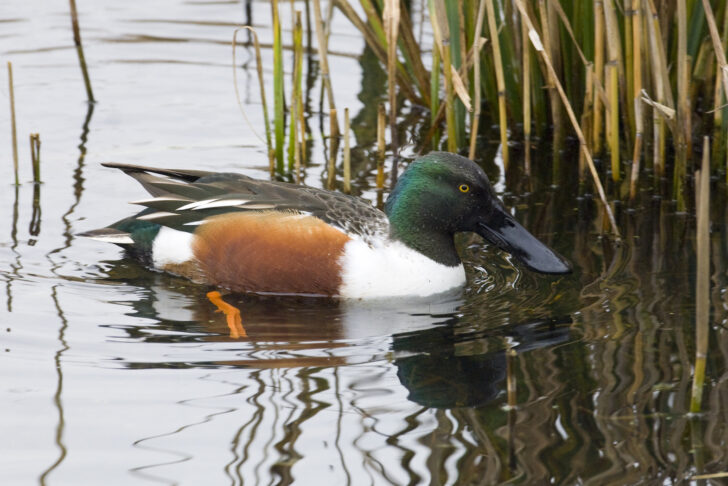
The site covers 451 hectares and contains four SSSIs spaced along the valley from just downstream of Ware in Hertfordshire to Finsbury Park in London, a total distance of about 15 miles. The whole site is contained within the Lee Valley Regional Park.
Three of those SSSIs are within Hertfordshire namely:
- Amwell Nature Reserve
- Rye Meads Nature Reserve
- Turnford and Cheshunt Pits (part of this site is in Essex)
They are all owned and managed by different organisations although they are functionally linked:
- Amwell by the Herts and Middlesex Wildlife Trust
- Rye Meads is owned by Thames Water and managed by the Royal Society for the Protection of Birds (RSPB)
- Turnford and Cheshunt by the Lee Valley Regional Park Authority
Overall the wetlands of the Lee Valley Regional Park represent one of the major inland avian wintering areas in the UK, supporting over 10,000 birds each year with some traveling thousands of miles from Africa and Central Europe. Key species are the Tufted and Shoveler ducks, cormorants and notably the bittern which was on the verge of extinction in this country and now regularly winters in the Valley.
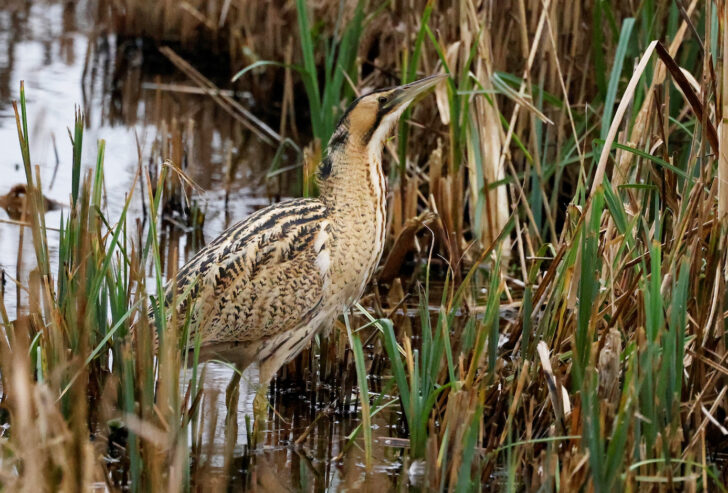
Sixteen species of mammals that are considered under threat occur in the park including otters, water voles and bats. The Lee Valley is also important on a regional and local basis for its abundance and variety of wetland plants.
How is the site managed and protected?
The Lee Valley Regional Park Authority is overseen by a Member Board with representation from each of the local authorities and London councils whose borders are crossed by the park’s boundaries plus representation from the Canal & River Trust and the Environment Agency. Specifically concerning Hertfordshire there are four Members from Hertfordshire County Council and two each from Broxbourne Borough Council and East Hertfordshire District Council.
Development pressure
With the area being very close to the capital one of the main concerns is the ongoing pressure for commercial and residential development.
Ramsar sites have the highest possible level of protection in national planning policy, equivalent to that of National Parks (see paragraphs 11 and 187 of the National Planning Policy Framework). However, the areas immediately adjacent to the Lee Valley are very attractive to developers. For example, the pending ‘Cheshunt Lakeside’ development would see 1,725 new homes built adjacent to the Ramsar site, bringing 4,000 more people and 2,000 more cars.
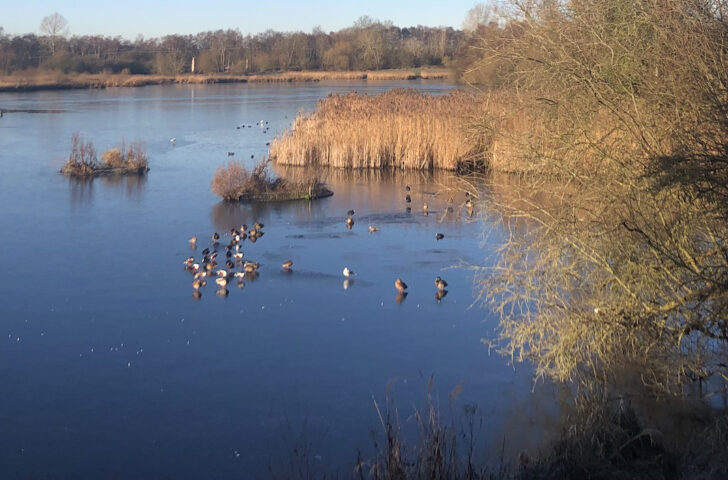
While visitors to the Lee Valley are welcomed, too much human presence brings with it disruption and damage to the wildlife and ecosystem. The additional noise and traffic disturb wildlife habitats. Pets particularly dogs can injure or kill wildlife and cause problems of dog fouling. And having more visitors unfortunately brings more littering and pollution.
Rye Meads Nature Reserve in particular may also be negatively impacted by any potential operational issues and future expansion of the immediately adjacent Rye Meads Sewage Treatment Works (STW). The STW takes a large percentage of Hertfordshire’s sewage, and more from Essex. With 10,000 new dwellings planned for nearby Gilston, and thousands more new dwellings proposed for the wider area, will the STW be able to cope?
The local planning authorities are required to consider the Ramsar classification when preparing Local Plans and making decisions on planning applications. The Lee Valley Regional Park Authority is consulted on all planning applications which may have a potential impact. Also consulted are Natural England, the Environment Agency, and conservations bodies such as local wildlife trusts who provide expertise on the ecological value and potential impacts of the proposed development. The Authority can and does apply for Section 106 contributions (i.e. funding) from developers to help mitigate the effects of any development permitted.
Other threats
Pollution, invasive species and climate change all pose additional threats to the Lee Valley Ramsar site.
Pollution. The water in the valley is naturally quite high in nutrients which can be harmful. The area is also vulnerable to sewage spills and run-off water bringing in oil, pesticides, PFAS forever chemicals, microplastics and other pollutants.
Invasive species. These can be very damaging and cause native biodiversity to fall by spreading disease or outcompeting native species for food or space. Mink, crayfish and plants such as New Zealand pygmyweed and pennywort have been particularly problematic.
Climate change. The changes in the seasons makes it difficult to plan work on the site as there is now less predictability around temperature and weather conditions. Additionally, winters are less severe in the UK and also on the continent, meaning that fewer migrating wetland birds are heading over. This is called ‘short stopping’ as there’s no need for the birds to travel as far as the UK if conditions are just as mild on the continent.
Day to day site management
The overall wetland area is complex and the various bodies who own and manage the different sites work together sharing best practice. They are all focussed on achieving the shared objectives in the Lee Valley Biodiversity Action Plan.
Cath Patrick, Conservation Manager for the Lee Valley Regional Park Authority said:
‘A mix of volunteers alongside dedicated staff and on-site rangers carry out on-going maintenance work. If the waterways and reedbeds were not managed and cut back the landscape would eventually go back to being willow and woodland.’
Visiting the Lee Valley Ramsar site
If you wish to visit, why not arrive on foot or via public transport?
Amwell Nature Reserve is easily reached via our own CPRE Hertfordshire self-guided walk Ware and the River Ash, or walk the circa 2 miles distance from the railway station at Ware.
Rye Meads Nature Reserve is just a short walk – less than one half mile – from the Rye House railway station in Hoddesdon.
The Cheshunt and Turnford Pits are a very short walk from the Cheshunt railway station, from which you can access the public footpaths along the Small River Lea or the Lee River Navigation, both of which run through the area.
All three sites can also be accessed from The Hertfordshire Way and The Lea Valley long distance trails; the guidebooks for these are available for online purchase on our merchandise page.
Or you could start your visit at The Wildlife Discovery Centre at Fishers Green in Essex.
– – –
Thank you to the staff at Lee Valley Regional Park Authority for their help in preparing this article.
